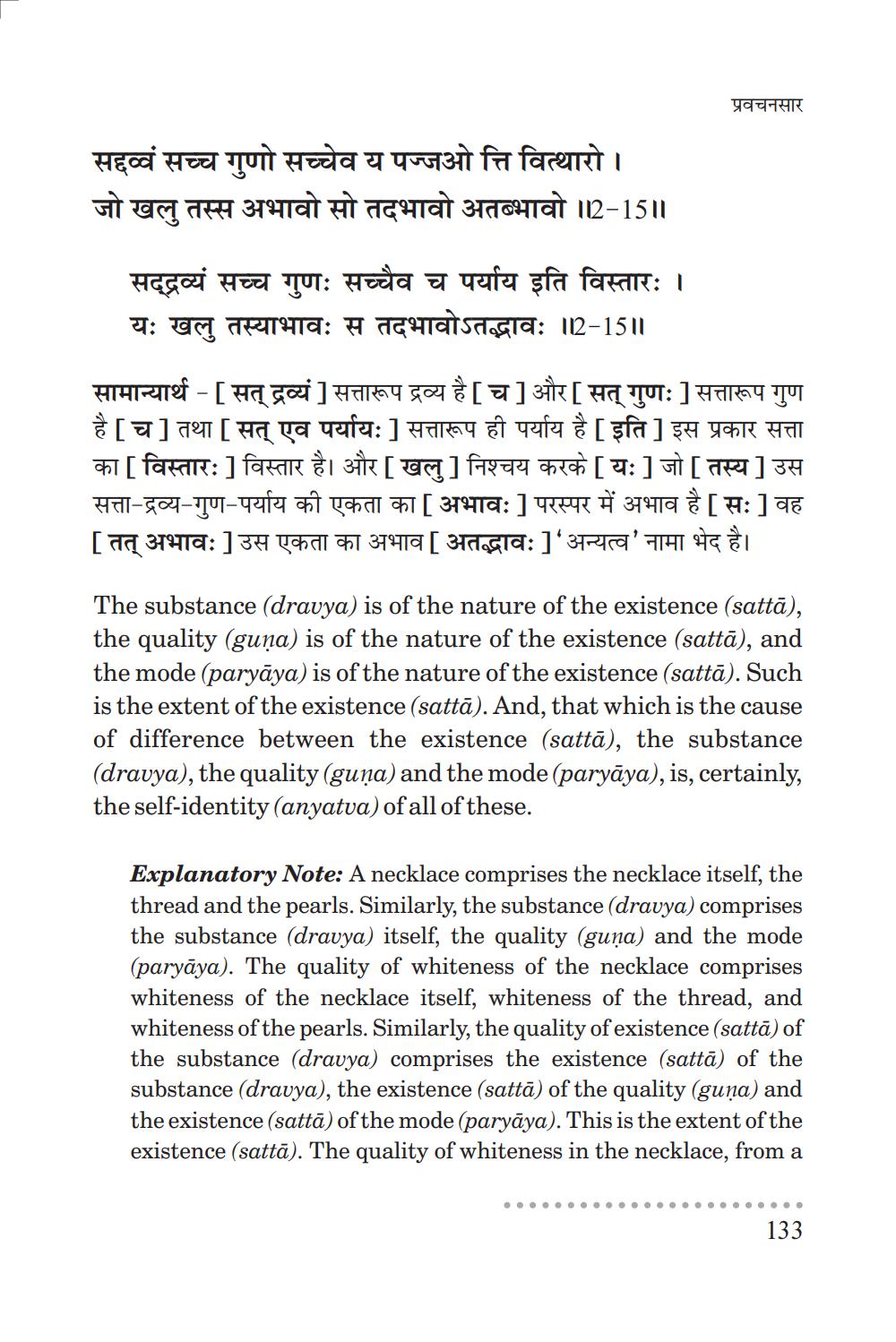________________
प्रवचनसार
सद्दव्वं सच्च गुणो सच्चेव य पज्जओ त्ति वित्थारो। जो खलु तस्स अभावो सो तदभावो अतब्भावो ॥-15॥
सद्रव्यं सच्च गुणः सच्चैव च पर्याय इति विस्तारः । यः खलु तस्याभावः स तदभावोऽतद्भावः -15॥
सामान्यार्थ - [ सत् द्रव्यं ] सत्तारूप द्रव्य है [च ] और [ सत् गुणः ] सत्तारूप गुण है [च ] तथा [ सत् एव पर्यायः ] सत्तारूप ही पर्याय है [इति ] इस प्रकार सत्ता का [ विस्तारः] विस्तार है। और [ खलु ] निश्चय करके [यः] जो [ तस्य ] उस सत्ता-द्रव्य-गुण-पर्याय की एकता का [ अभावः ] परस्पर में अभाव है [ सः] वह [ तत् अभावः ] उस एकता का अभाव [ अतद्भावः ] अन्यत्व' नामा भेद है।
The substance (dravya) is of the nature of the existence (sattā), the quality (guņa) is of the nature of the existence (sattā), and the mode (paryāya) is of the nature of the existence (sattā). Such is the extent of the existence (sattā). And, that which is the cause of difference between the existence (sattā), the substance (dravya), the quality (guņa) and the mode (paryāya), is, certainly, the self-identity (anyatva) of all of these.
Explanatory Note: A necklace comprises the necklace itself, the thread and the pearls. Similarly, the substance (drauya) comprises the substance (dravya) itself, the quality (guņa) and the mode (paryāya). The quality of whiteness of the necklace comprises whiteness of the necklace itself, whiteness of the thread, and whiteness of the pearls. Similarly, the quality of existence (sattā) of the substance (dravya) comprises the existence (sattā) of the substance (dravya), the existence (sattā) of the quality (guņa) and the existence (sattā) of the mode (paryāya). This is the extent of the existence (sattā). The quality of whiteness in the necklace, from a
133




